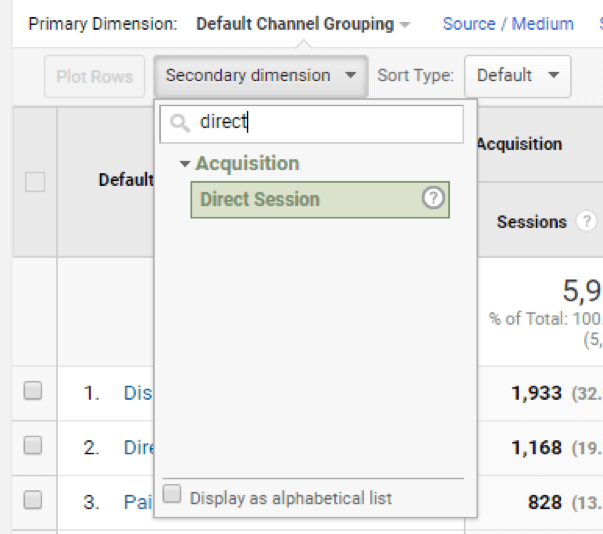The Value of Secondary Dimension in Google Analytics for Your SEO
The Value of Secondary Dimension in Google Analytics for Your SEO
Blog Article
Enhance Your Information Evaluation Utilizing Secondary Measurement in Google Analytics
Checking out the capacities of secondary dimensions in Google Analytics opens a realm of opportunities for refining data evaluation. By layering additional measurements onto main information collections, an even more elaborate story arises, shedding light on individual communications and efficiency signs.
Recognizing Additional Measurements
In the world of data analysis, a crucial facet to understanding is the principle of secondary measurements and their value in drawing out deeper insights from Google Analytics records. Second dimensions in Google Analytics refer to extra specifications that can be included to the main measurement, permitting an extra in-depth analysis of data. By including secondary measurements, analysts can sector and filter information to uncover patterns, fads, and relationships that may not be noticeable when looking at the data all at once. These second measurements can offer context and an extra extensive understanding of individual actions, web traffic resources, and other key metrics tracked by Google Analytics.

Advantages of Using Second Dimensions
When evaluating information in Google Analytics, the application of second measurements provides very useful insights into customer behavior and efficiency metrics. By including a secondary measurement to your primary information, you can delve much deeper right into the features of your web site visitors and their interactions.
Additionally, secondary measurements enhance the context of your primary data, providing a more detailed sight of user interaction and efficiency metrics. Generally, the use of additional dimensions in Google Analytics can substantially boost the depth and top quality of your information analysis, leading to more enlightened decision-making and enhanced results.
Just How to Include Secondary Dimensions
By incorporating second dimensions in Google Analytics, individuals can get much deeper insights right into their data evaluation process, permitting even more thorough evaluation of individual habits and efficiency metrics. Including secondary dimensions is an uncomplicated procedure that can dramatically improve the depth of evaluation. To add a secondary dimension in Google Analytics, begin by navigating to the record you desire to examine. When in the report, situate the "Secondary measurement" tab above the information table. Click it to reveal a dropdown food selection with different options such as Behavior, Innovation, and Personalized Capacities. Select the measurement you desire to add, such as 'Source/Medium' or 'Device Category'. This secondary dimension will certainly then be put on your existing information, offering added context and enabling an extra detailed analysis of user communications. By making use of secondary dimensions properly, users can reveal valuable insights that may have or else been neglected, causing notified decision-making and boosted performance strategies.
Studying Data With Secondary Dimensions
Using secondary measurements in information analysis provides a much more thorough understanding of individual habits and performance metrics. By including a secondary dimension to your primary information set in Google Analytics, you can dig deeper right into the characteristics of your web site site visitors and their interactions. As an example, combining the primary dimension of 'source/medium' with the second measurement of 'landing web page' can disclose which certain pages are bring in web traffic from various resources, aiding visit this page you maximize these pages for far better interaction.

Essentially, assessing read this article data with secondary dimensions equips you to get useful insights right into individual actions, recognize trends, and make educated decisions to boost the efficiency of your digital residential properties.
Finest Practices for Second Measurements
In information evaluation, integrating secondary dimensions successfully can substantially enhance the depth of understandings derived from metrics and individual behavior patterns. When using second dimensions in Google Analytics or any kind of other logical device, it is vital to follow ideal practices to make sure the accuracy and importance of the data evaluation.
One key finest method is to meticulously pick second measurements that match the primary measurement being examined. Selecting secondary measurements that give extra context or additional division can use a more thorough understanding of the data. It is additionally important to stay clear of overcomplicating the evaluation by consisting of way too many additional dimensions, which may cause complication or dilution of understandings.
Additionally, it is recommended to experiment with different combinations of second and primary dimensions to reveal brand-new correlations and fads. Frequently assessing and refining the choice of secondary measurements based on the details objectives of the evaluation can bring about even more actionable understandings. By complying with these best techniques, information experts can leverage secondary dimensions successfully to improve the total information analysis process and decision-making capabilities.

Final Thought
To conclude, incorporating additional dimensions in Google Analytics is important for an extensive data evaluation method. By leveraging secondary measurements along with key ones, Go Here analysts and marketing experts can discover useful insights and relationships that can notify decision-making and enhance electronic marketing approaches. Understanding just how to effectively make use of additional measurements and adhering to finest methods will permit specialists to extract significant data and improve their overall performance metrics.
Secondary dimensions in Google Analytics refer to added parameters that can be added to the key measurement, permitting for a much more thorough analysis of data. By integrating secondary measurements, analysts can section and filter information to discover patterns, trends, and correlations that might not be obvious when looking at the data as a whole. Integrating the main measurement of 'source/medium' with the second measurement of 'landing web page' can expose which details pages are drawing in web traffic from various resources, helping you enhance these pages for better involvement.
One secret best technique is to meticulously choose additional measurements that complement the main measurement being assessed. By following these best methods, data analysts can take advantage of second dimensions effectively to improve the overall information evaluation process and decision-making capabilities.
Report this page